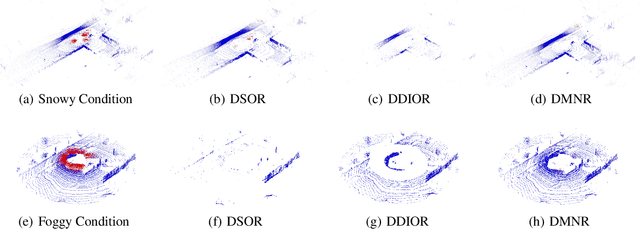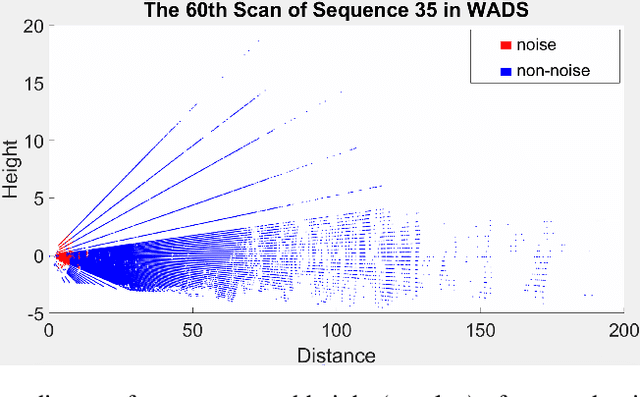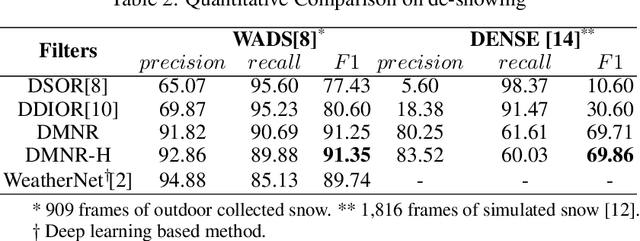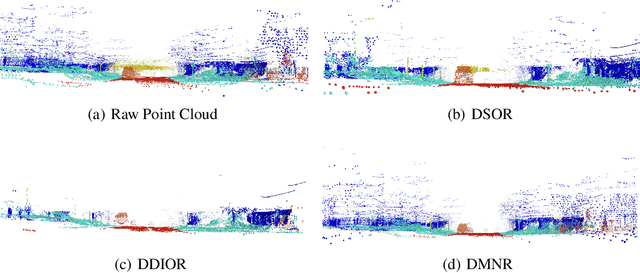Yanqi Ma
DMNR: Unsupervised De-noising of Point Clouds Corrupted by Airborne Particles
May 10, 2023



Abstract:LiDAR sensors are critical for autonomous driving and robotics applications due to their ability to provide accurate range measurements and their robustness to lighting conditions. However, airborne particles, such as fog, rain, snow, and dust, will degrade its performance and it is inevitable to encounter these inclement environmental conditions outdoors. It would be a straightforward approach to remove them by supervised semantic segmentation. But annotating these particles point wisely is too laborious. To address this problem and enhance the perception under inclement conditions, we develop two dynamic filtering methods called Dynamic Multi-threshold Noise Removal (DMNR) and DMNR-H by accurate analysis of the position distribution and intensity characteristics of noisy points and clean points on publicly available WADS and DENSE datasets. Both DMNR and DMNR-H outperform state-of-the-art unsupervised methods by a significant margin on the two datasets and are slightly better than supervised deep learning-based methods. Furthermore, our methods are more robust to different LiDAR sensors and airborne particles, such as snow and fog.
 Add to Chrome
Add to Chrome Add to Firefox
Add to Firefox Add to Edge
Add to Edge